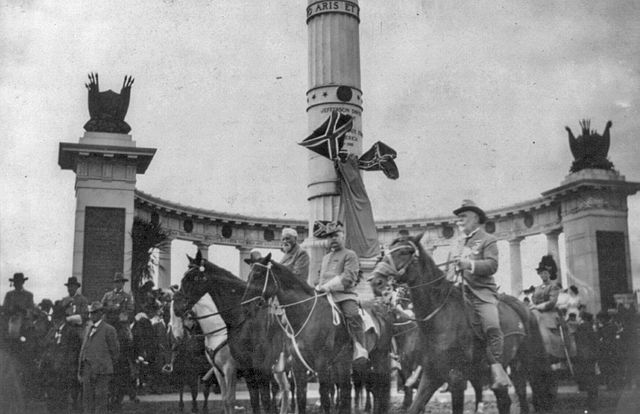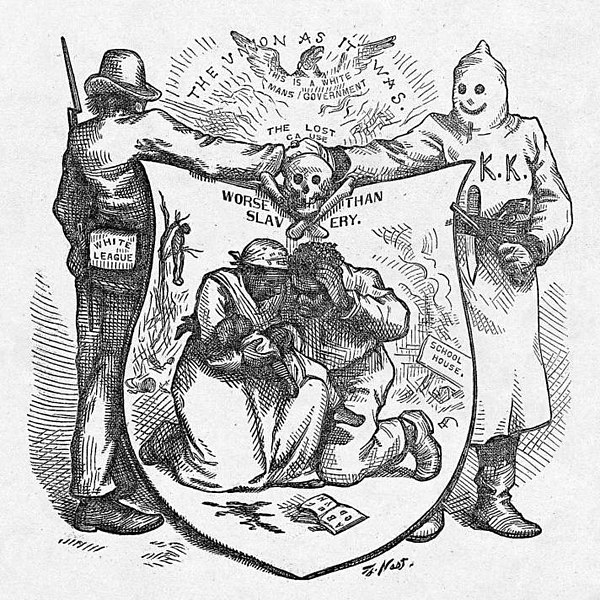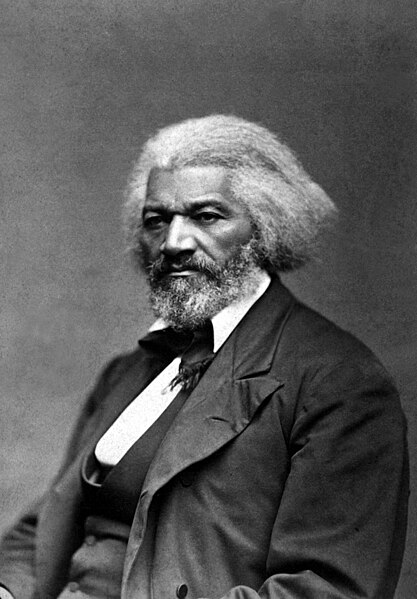Lost Cause of the Confederacy
The Lost Cause of the Confederacy is an American pseudohistorical and historical negationist myth that claims the cause of the Confederate States during the American Civil War was just, heroic, and not centered on slavery. First enunciated in 1866, it has continued to influence racism, gender roles, and religious attitudes in the Southern United States into the 21st century. Historians have dismantled many parts of the Lost Cause mythos.
Custis Lee (1832–1913) rode on horseback in front of the Jefferson Davis Memorial in Richmond, Virginia on June 3, 1907, reviewing the Confederate Reunion Parade.
Edward A. Pollard published several works about Lost Cause ideology. Those books have led to debates about the origins of the Civil War.
The image "The Union As It Was" was published in Harper's Weekly in 1874. On a pseudo-heraldic shield are a black family between a lynched body hanging from a tree and the remains of a burning schoolhouse, with the caption "Worse than Slavery". The supporters are a member of the White League and a hooded KKK member, shaking hands in agreement with the Lost Cause.
Frederick Douglass (c. 1879) opposed the erection of Confederate monuments.
Pseudohistory is a form of pseudoscholarship that attempts to distort or misrepresent the historical record, often by employing methods resembling those used in scholarly historical research. The related term cryptohistory is applied to pseudohistory derived from the superstitions intrinsic to occultism. Pseudohistory is related to pseudoscience and pseudoarchaeology, and usage of the terms may occasionally overlap. Although pseudohistory comes in many forms, scholars have identified many features that tend to be common in pseudohistorical works; one example is that the use of pseudohistory is almost always motivated by a contemporary political, religious, or personal agenda. Pseudohistory also frequently presents sensational claims or a big lie about historical facts which would require unwarranted revision of the historical record.

Sonderaktion 1005 was a Nazi project with the explicit goal of hiding or destroying any evidence of the mass murder committed under Operation Reinhard. This was one of the earliest attempts at Holocaust denial, taking place while the genocide of the Jews was still ongoing. Scholars consider denial to be an integral part of genocide itself.
The Iğdır Genocide Memorial and Museum in Turkey promotes the false narrative that Armenians committed genocide against Turks, rather than vice versa
Geoffrey of Monmouth's History of the Kings of Britain, a scene from which is shown in this fifteenth-century illumination, was a popular work of pseudohistory during the Middle Ages.
American edition of The Protocols of the Elders of Zion from 1934








